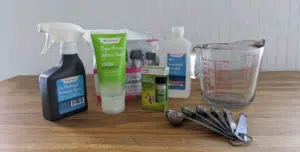

As ridiculous as it sounds, you shouldn’t mix hand sanitisers. Do you know why? Read on to understand why mixing commercial sterilisers with DIY products is wrong.
What do experts say about using these?
Most health departments and professionals say it’s not wise to DIY a home cleanser when you complete your blood count exam. While homemade disinfectant helps us stay safe, researchers recommend more reliable ways to protect ourselves against Covid-19. The sudden transmission of the infection has residents around cleaning out shelves.
And if you’re trying to shop it digitally, good luck. Much of it on Amazon and Walmart is out of stock or marked up. Grocery stores also limit the number of sterilising items you can buy. The scarcity and restrictions have inspired users to produce their own. Yet, just because there are specific recipes doesn’t mean you can adopt the DIY cleaner.
Homemade recipes
Many DIY sanitiser recipes combine isopropyl alcohol with aloe vera gel. Besides, that’s the ratio that the majority of brands use. Even if you’re following the right method, you could always screw it up. Here is a guide on what you should check out.
Major Concerns
Experts point out why such a disinfectant isn’t the best option. This section explains the major issues of why doctors discourage homemade products. Their concerns include the following:
- The homemade version must contain aloe cream. If you don’t use enough, the skin on your hands can dry out, causing it to break or leak. Such a cleaner would be ineffective.
- Similarly, be keen on the water ratio in the handmade version. If you don’t use enough water, the final result will be less effective than a store-bought one.
- The other problem is that the supply is still challenging because of the success of such handmade products.
So, what should you do instead?
The CDC and WHO believe sanitising is not the safest way to prevent infection. A PCR travel test is the best way to avoid Covid-19, but cleaning your hands is the most basic thing you should do.
Clean your hands for 20 seconds, many times a day, with soap and water. You may also use a cleanser after using the toilet and before and after sleeping. Alternatively, use soapy water before or after you cook food. I don’t suggest it. But if you’re willing to produce your disinfectant, avoid products that don’t use at least 60% alcohol. Otherwise, using soap and water for children’s skin is best.
Which Verdict is the winning option?
By now, you know the risks of mixing PCR Travel cleansers. Washing with water can lower our risk of getting diseases. Alternatively, using sanitiser can help kill germs. Nevertheless, in the above debate, we discussed why your chosen cleanser might not work. A Herpes detection Virus Test is needed to validate that the hand wash has been performed properly. You know you are safe if no live virus is left on your hands. Getting tested is the best solution for peace of mind. As a result of these precautions, we feel soap and water are ideal, especially during the Covid-19 outbreak. Hand washing does not affect a Complete Count Test unless you contaminate the blood during sampling. But this does not disqualify shop and DIY sanitisers from working or not working. They can help you sterilise when you don’t have water or soap.
